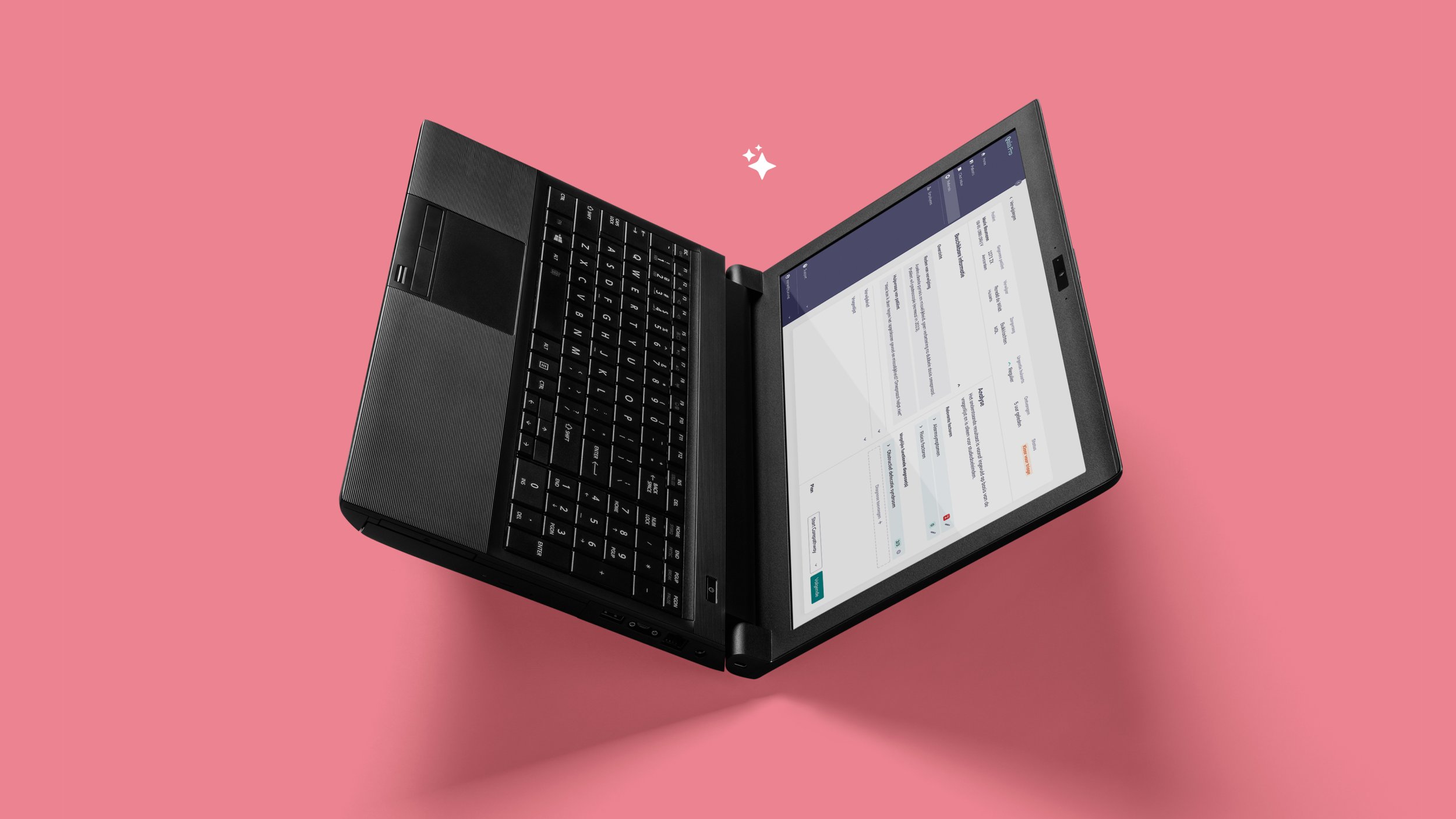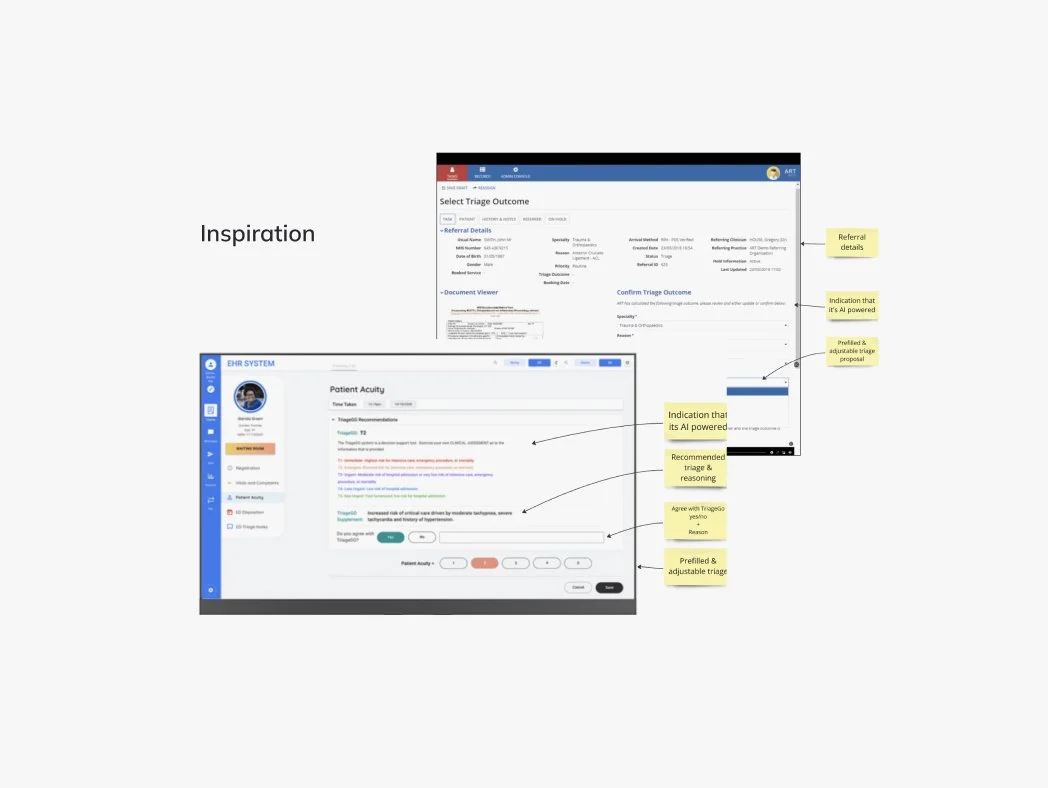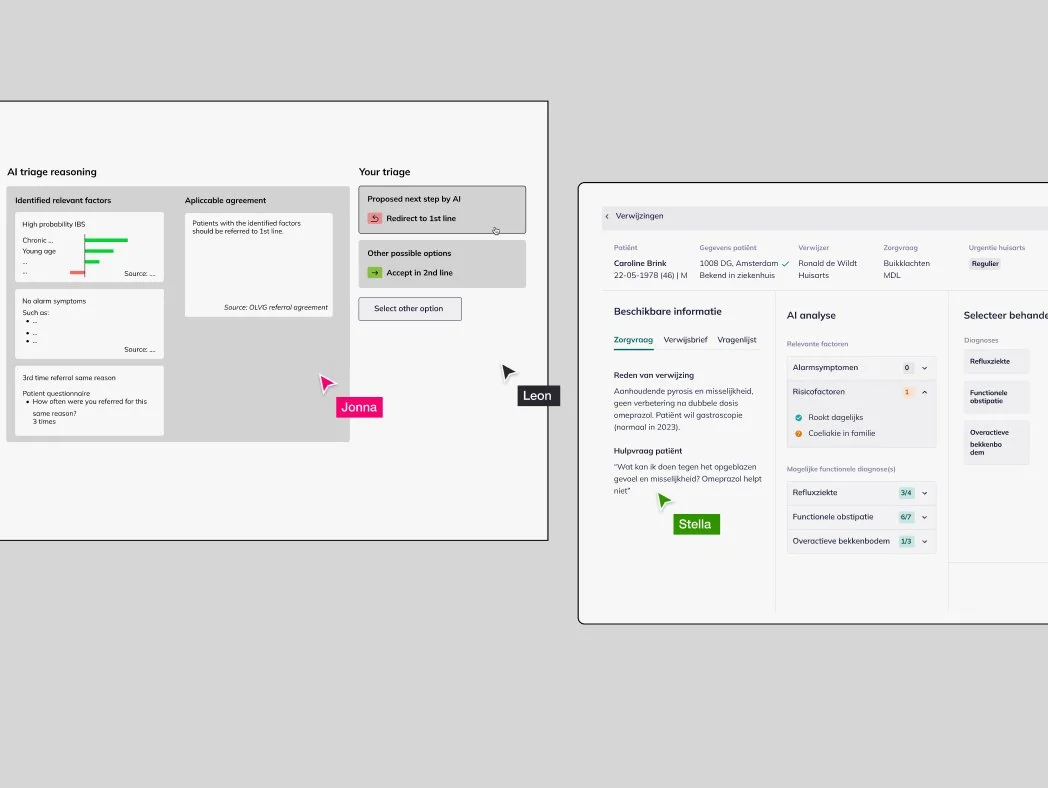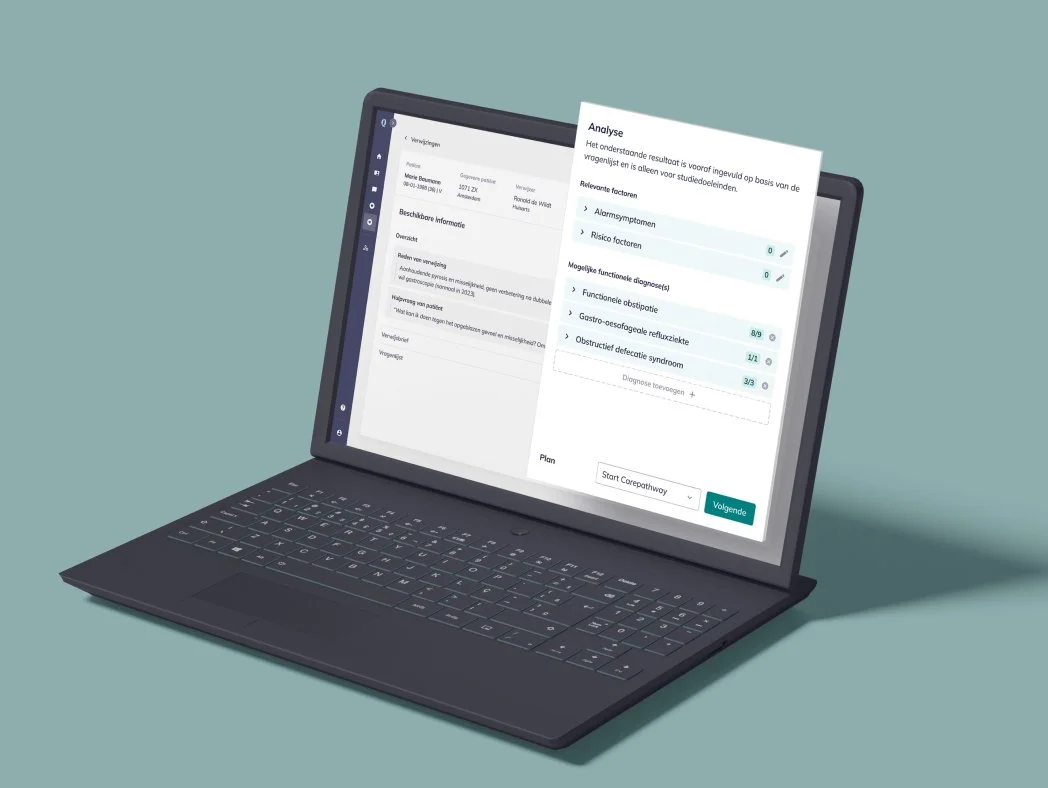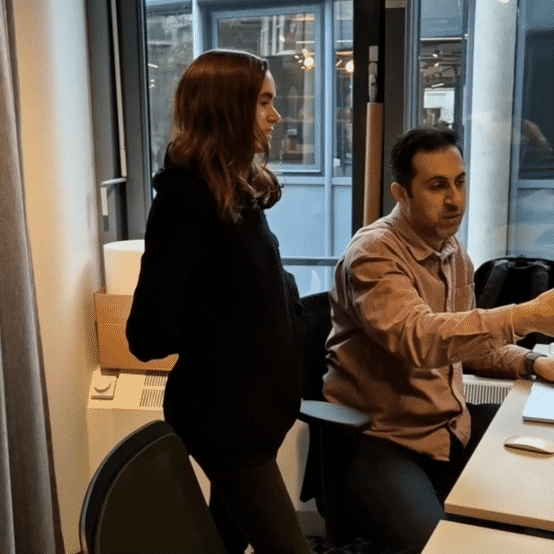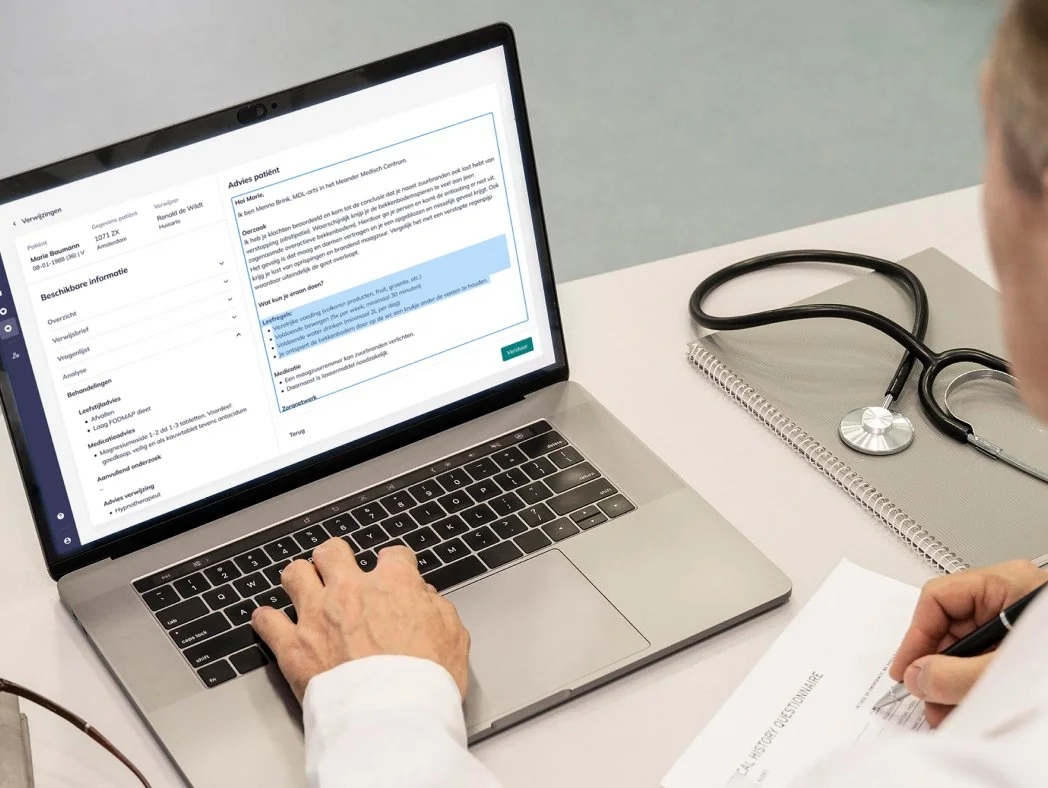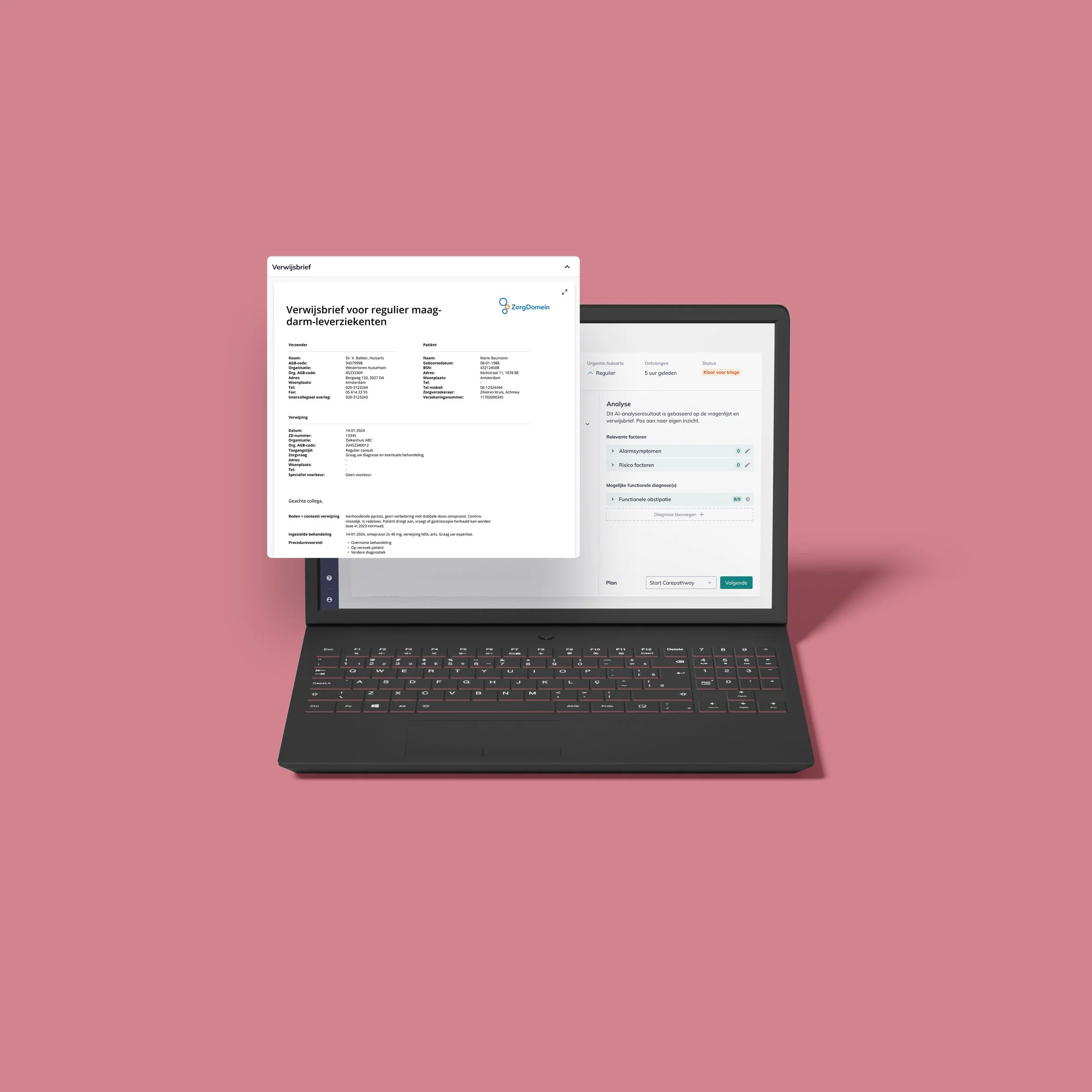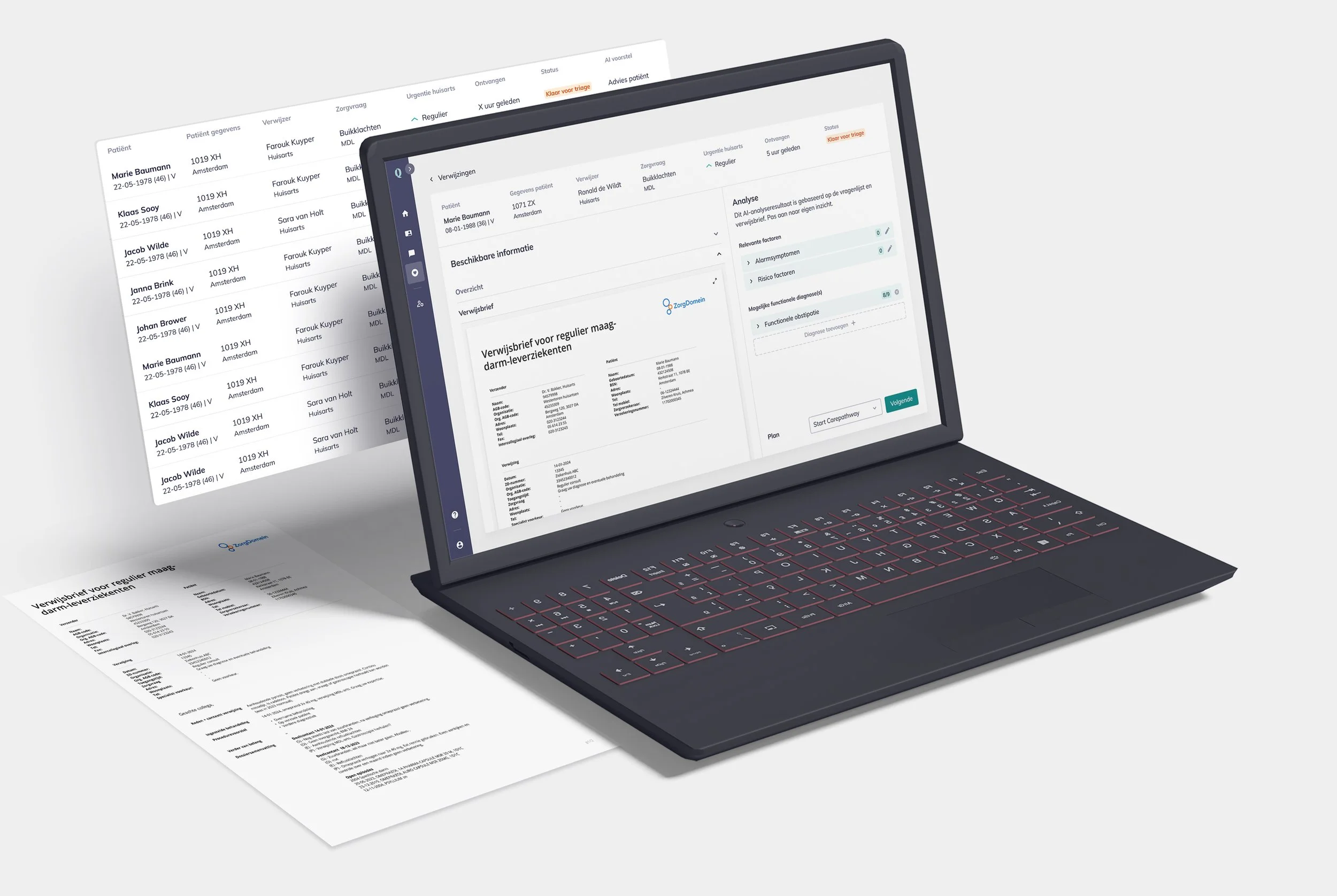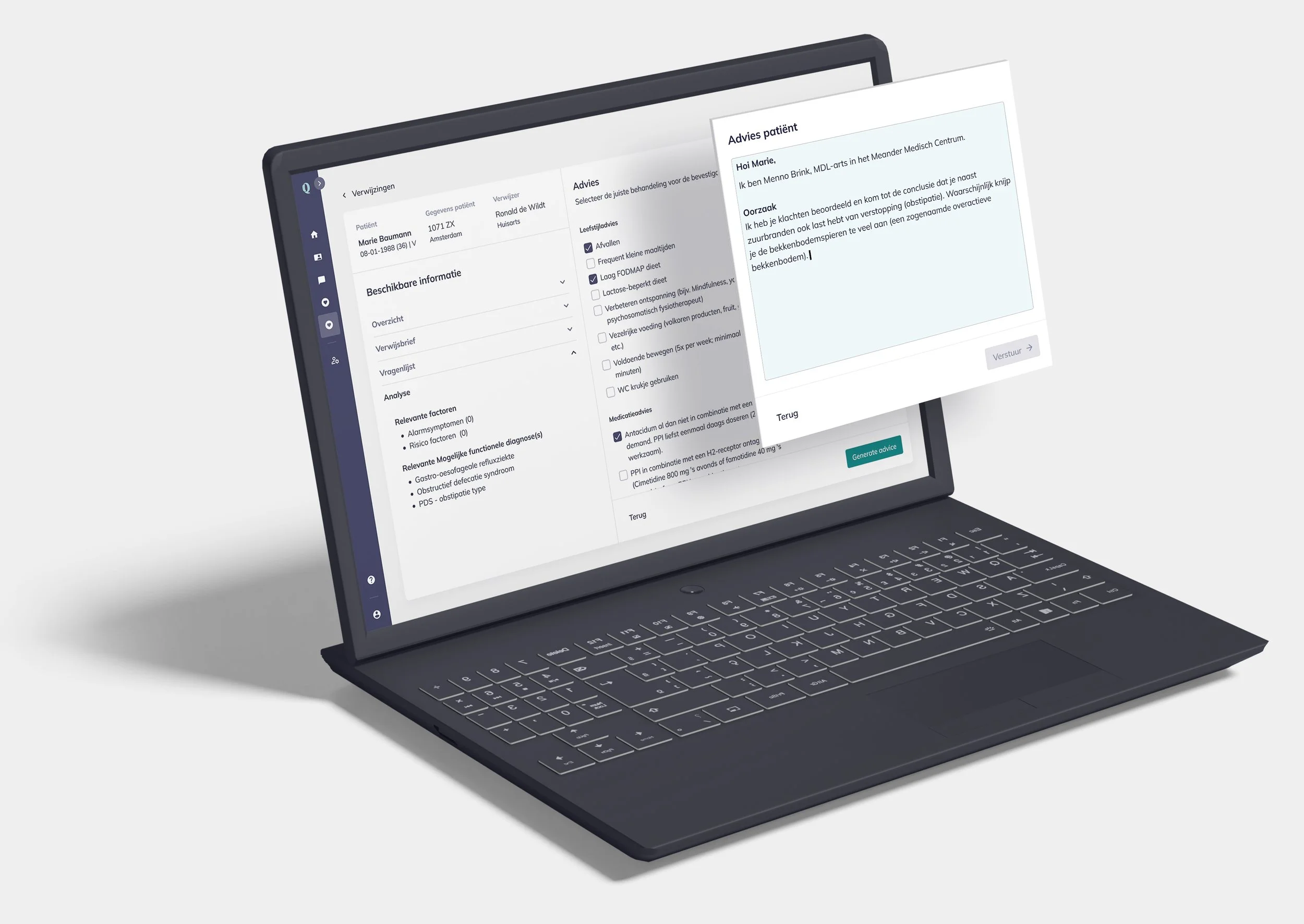
work /
Smart Triage
Designing AI-Powered Triage for Faster Diagnosis and Treatment
Quin | Amsterdam Netherlands 2024-2025
About Quin
Quin creates digital tools that improve access to healthcare by connecting GPs, specialists, and patients. Their products help simplify care and support healthcare providers under pressure.
Business challenge
IBS affects nearly 6% of Dutch adults and leads to long waits, repeat visits, and costly care. Many patients bounce between providers before getting the help they need. This delays treatment and strains the system.
How might we use AI to support faster, smarter triage in gastroenterology—while keeping quality high and earning specialists’ trust?
My role
My main focus was designing interactive UI prototypes that supported implementation and helped secure hospital buy-in. I co-developed wireframes with the UX and Service Designer and worked closely with developers to make sure everything was feasible, usable, and aligned with the design system.
Approach and insights
We started by diving into real specialist workflows, identifying pain points and areas where AI could genuinely help without overstepping. Our process included:
Researching current workflows and referral challenges.
Mapping user flows around specialist needs.
Analyzing existing solutions to spot gaps and opportunities.
Exploring explainable AI for trust and clarity
Prototyping, testing, and refining in loops
High-fi prototyping for testing, implementation, and hospital pitches.
Collaborating closely with developers.
Continuously testing with real users
Insights
We uncovered several key challenges in the gastroenterology triage process:
Too much time spent on routine referrals: Specialists spent hours reviewing basic cases that didn’t need a hospital visit.
Long waits for simple advice: Some patients waited over a year for recommendations that could’ve been automated.
Specialists overloaded with low-priority cases: Their time wasn’t being used where it mattered most.
These insights guided our design, helping us create something that saved time, reduced admin, and got patients the right care sooner.
The Solution: Quin’s Smart Triage Tool
An AI-supported tool that helps specialists triage IBS cases more efficiently while keeping them fully in control.
Step 1: Structured data access: Prioritizes urgent cases, automates assessments, and provides a clear clinical overview.
Step 2: Explainable AI analysis: Breaks down diagnoses with step-by-step logic, linked sources, and contributing factors.
Step 3: Personalized treatment selection & advice: AI suggests treatments, specialists refine, and patients receive clear, editable guidance.
High level user flow
The specialist moves through the triage process by scanning cases, reviewing summaries, checking AI suggestions, and making adjustments when needed. Each step supports clinical decisions while saving time and keeping control in the right hands.

Step 1:
Structured data access
Prioritizes urgent cases in a work list, automates assessments, and provides a clear clinical overview.

Cutting through data overload
In early research sessions with specialists, we found that one of the biggest challenges was scrolling through overwhelming amounts of patient data. Specialists needed structured, high-priority information at a glance, while retaining access to full medical records when necessary.
Solution
A Triage List prioritizing urgent cases for faster intervention.
A structured data panel, summarizing clinical information while allowing deep dives to raw data when needed.
AI-powered analysis that evaluates referrals and questionnaire responses, streamlining patient classification.
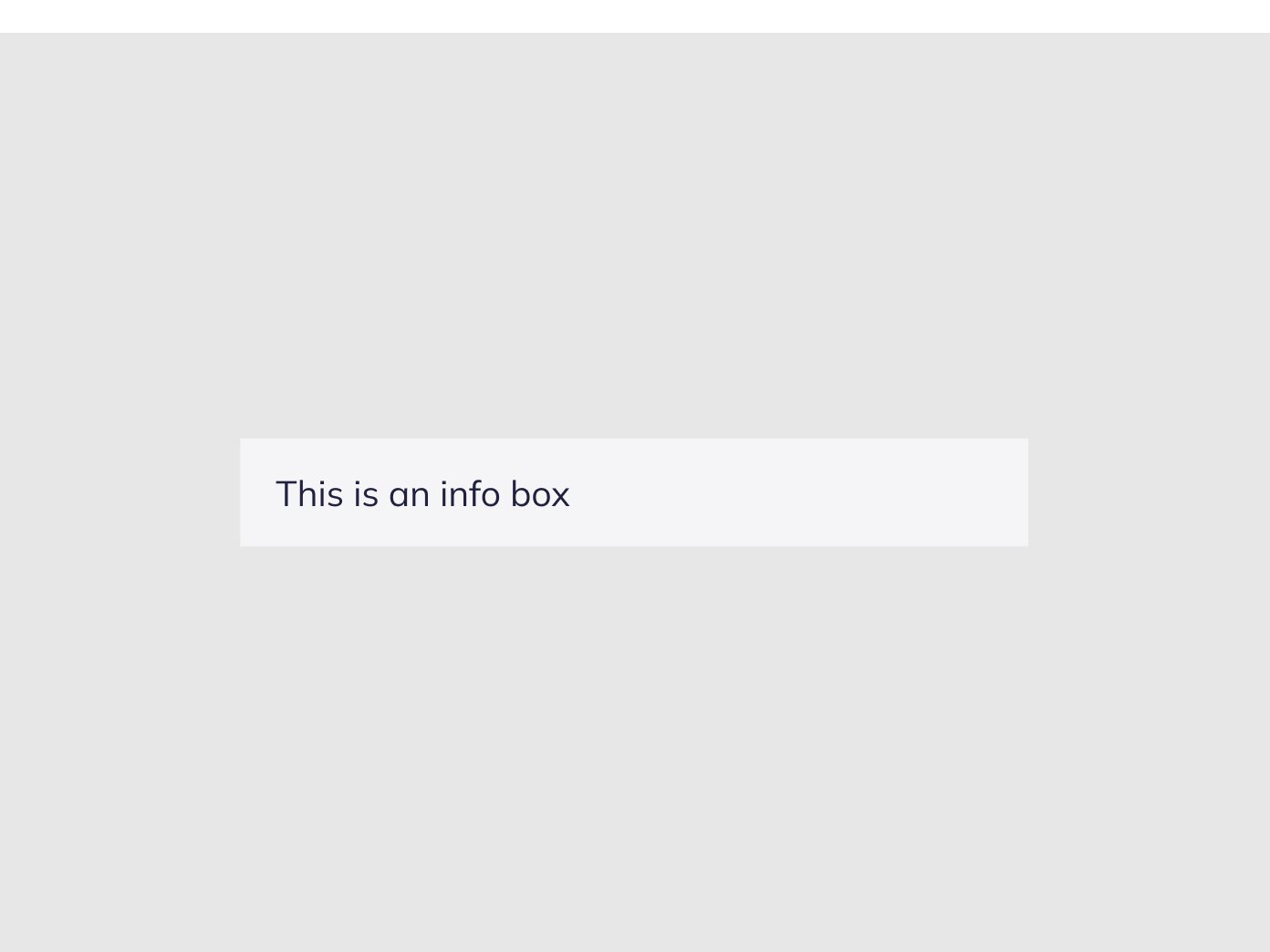

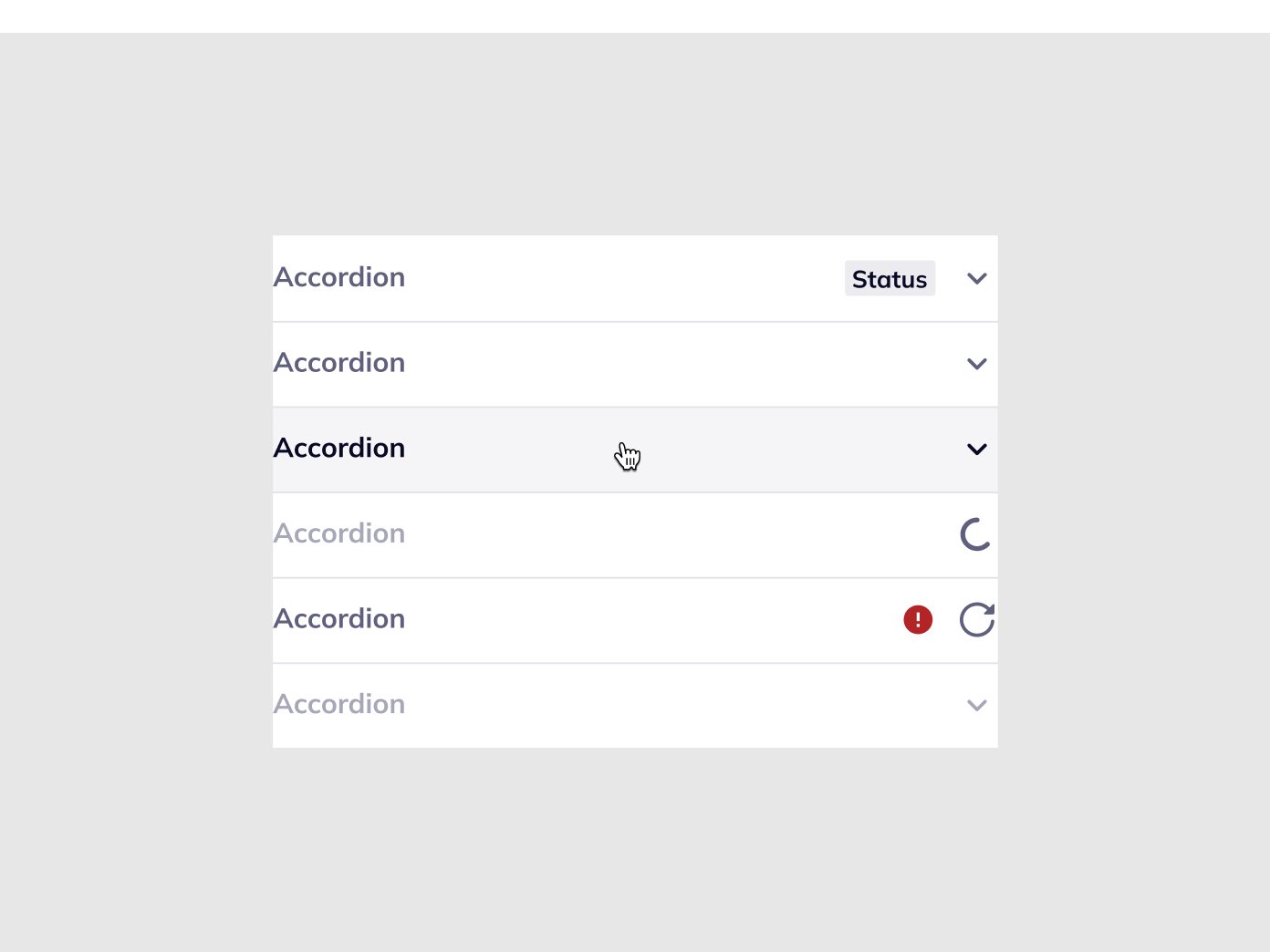


Step 2:
Explainable AI analysis
Displays AI-driven analysis of alarm symptoms, risk factors, and probable diagnoses based on clinical data. Provides a step-by-step breakdown with linked sources and contributing factors for transparency and trust.

Building trust through transparency
One of the most critical insights from our research was that specialists won’t trust AI unless they understand how it reaches decisions. They need visibility into the reasoning behind each recommendation from the raw information–in one screen.
Solution
A dedicated AI analysis panel that breaks down symptoms, risk factors, and diagnoses in an explainable way.
Expandable sections to reveal AI logic step by step, allowing specialists to verify and cross-check AI-generated insights.
Linked sources and contributing factors, reinforcing trust in AI recommendations.
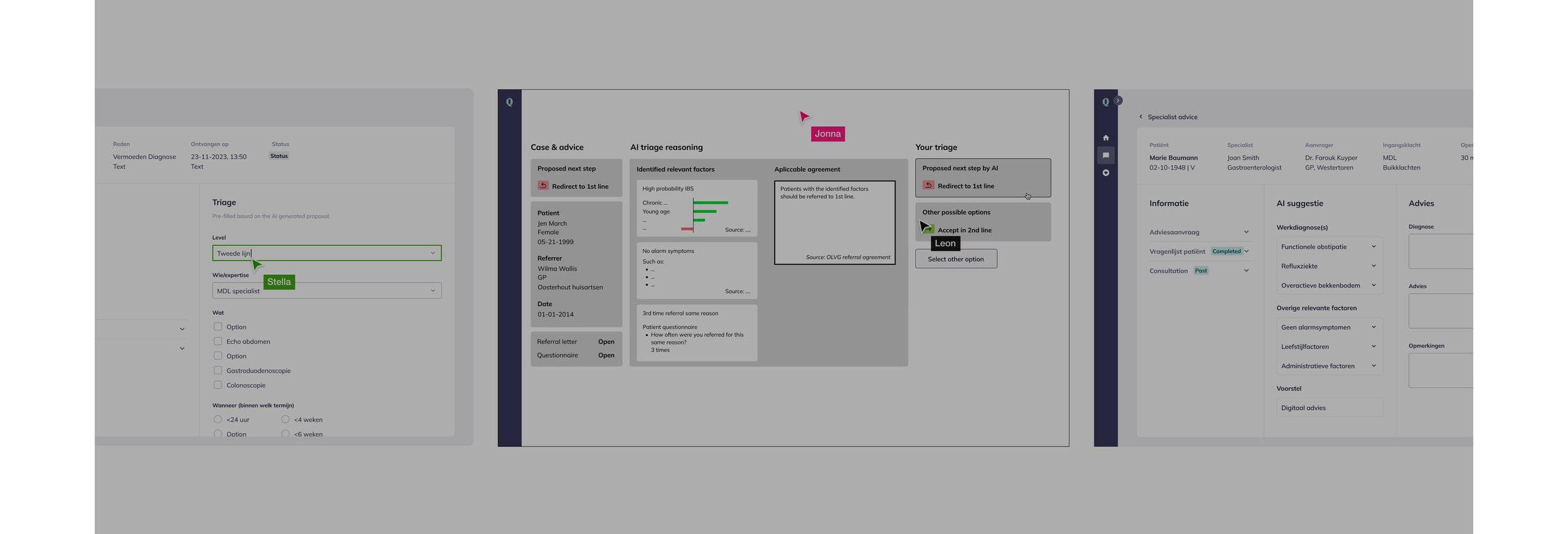
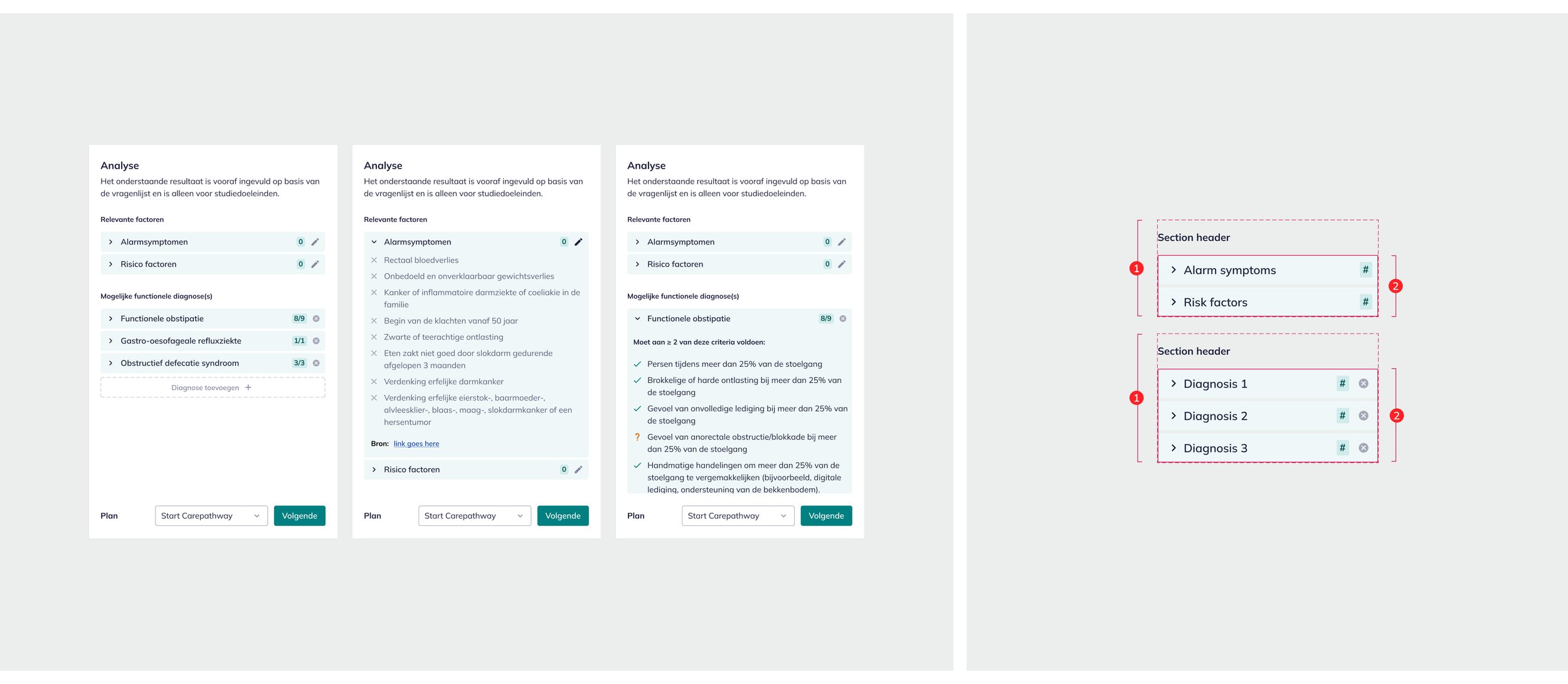
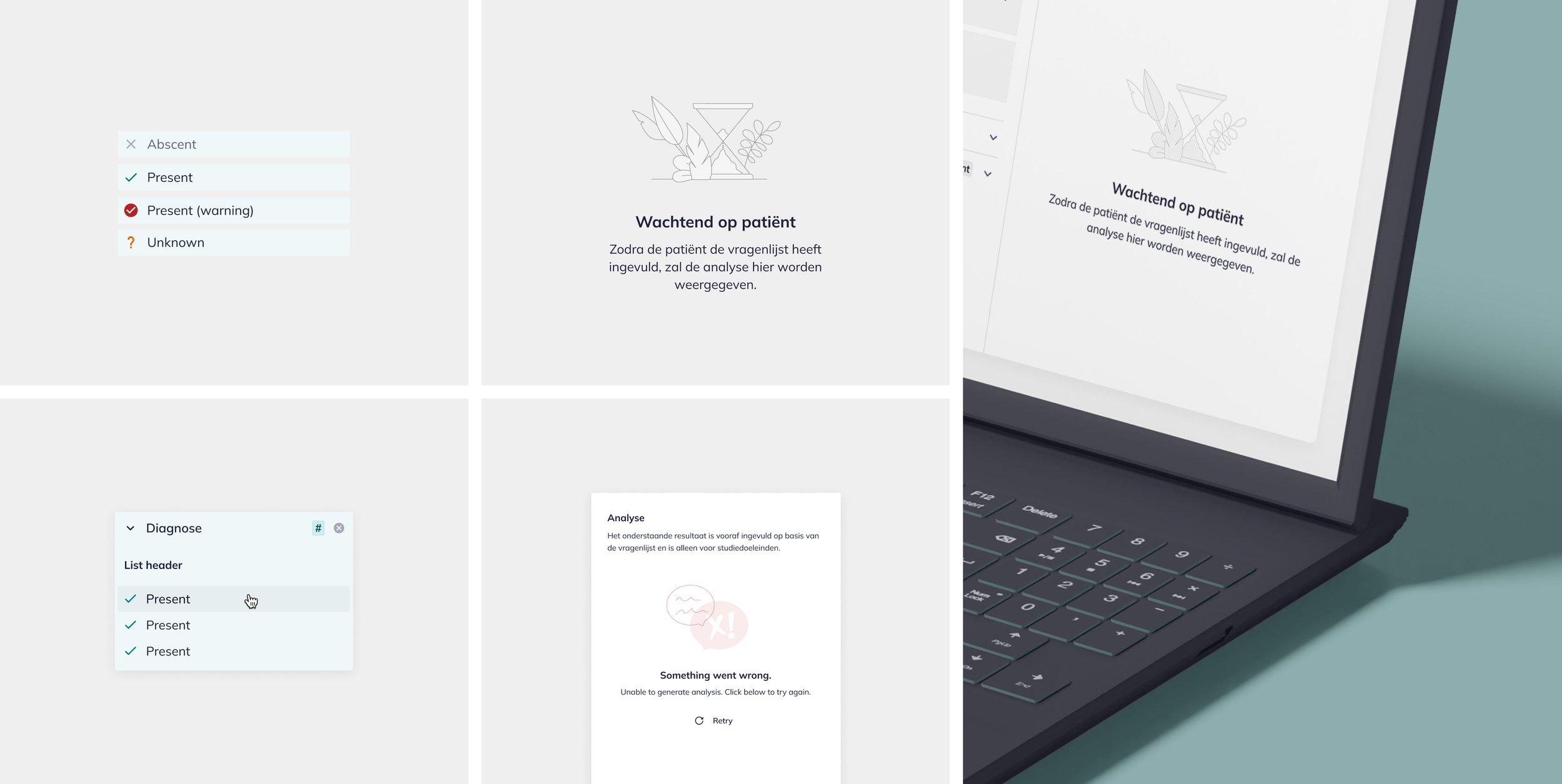
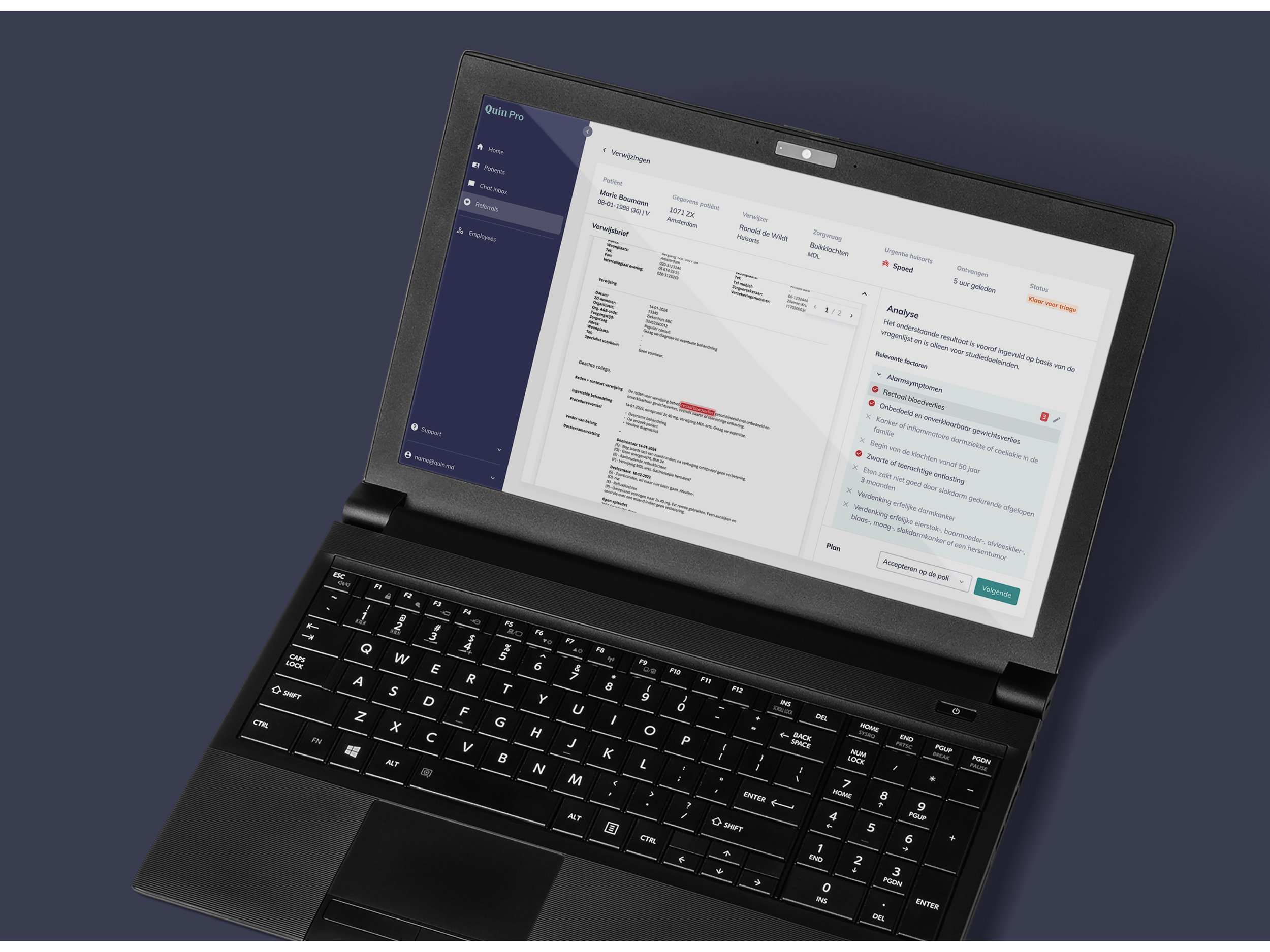
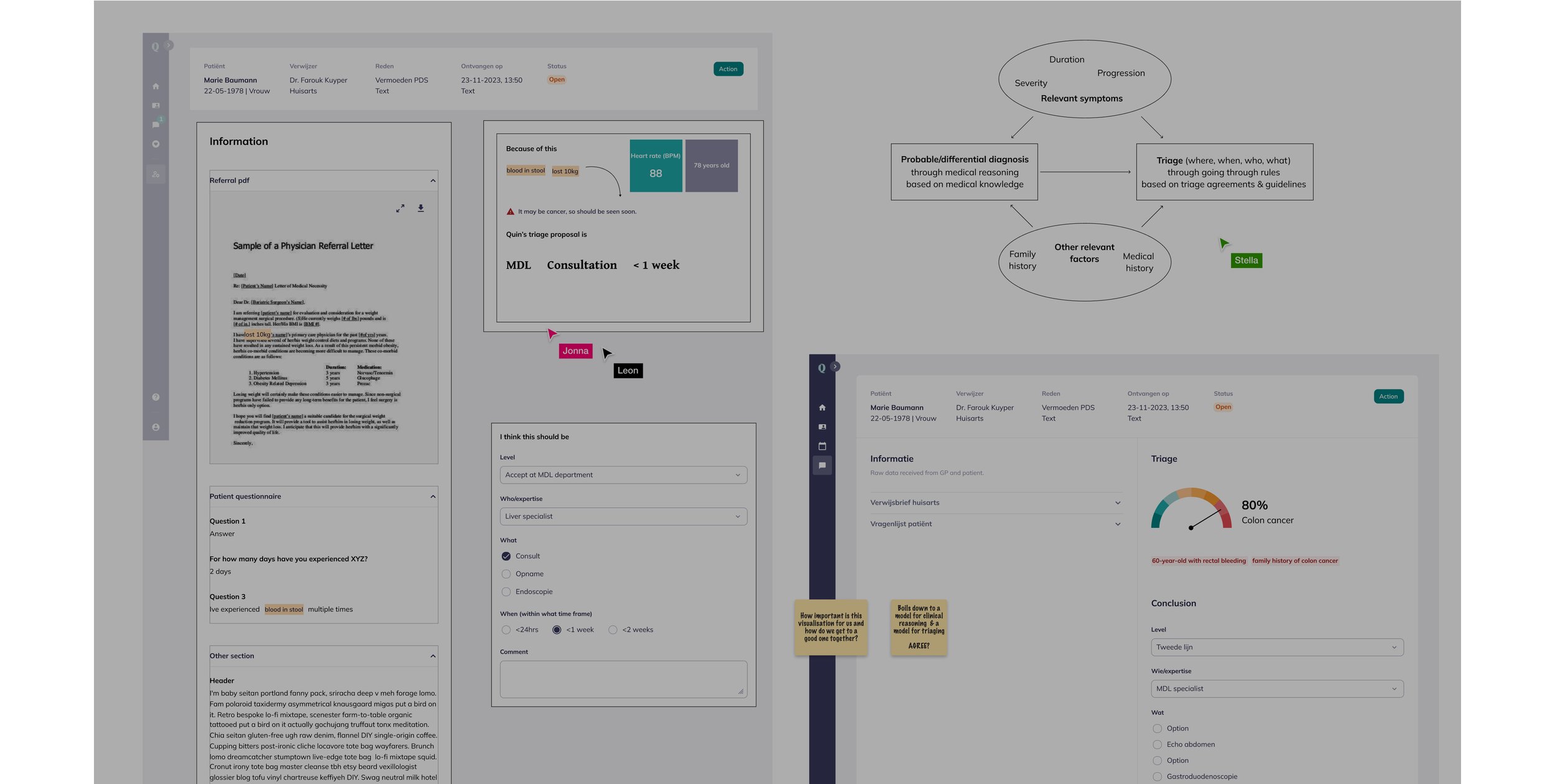

AI as a support, not a substitute
Through iterative testing, it became clear that clinicians will not adopt AI-driven solutions unless they retain control over final decisions. They needed an intuitive way to override or adjust AI-generated outcomes.
Solution
A flexible editing mode where specialists can adjust symptoms, risk factors, and diagnoses.
AI-generated recommendations remain editable, ensuring specialists can tailor them to specific cases.
Positioning AI as a support tool, assisting triage rather than making autonomous decisions.
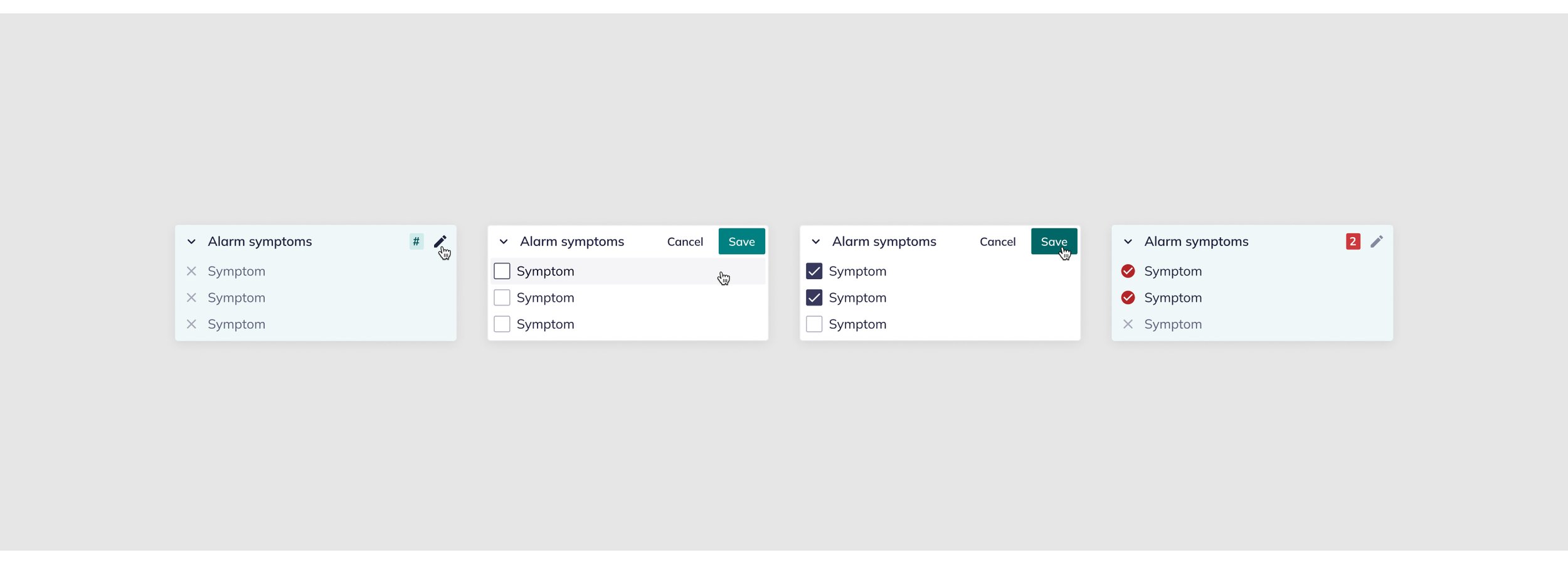



Step 3:
Personalized treatment selection & advice
AI suggests treatments, specialists select and refine treatment and advice, and patients receive clear, pensonalised guidance.

Making treatment personal, efficiently
Specialists want to provide personalized care, but they lack the time to manually draft advice for every patient. At the same time, patients are more likely to follow treatment recommendations when they feel tailored and personal.
Solution
AI suggests treatment options based on confirmed diagnoses in previous steps.
Specialists review and select the most appropriate plan.
AI generates clear, patient-friendly medical advice, editable by the specialist before being sent.



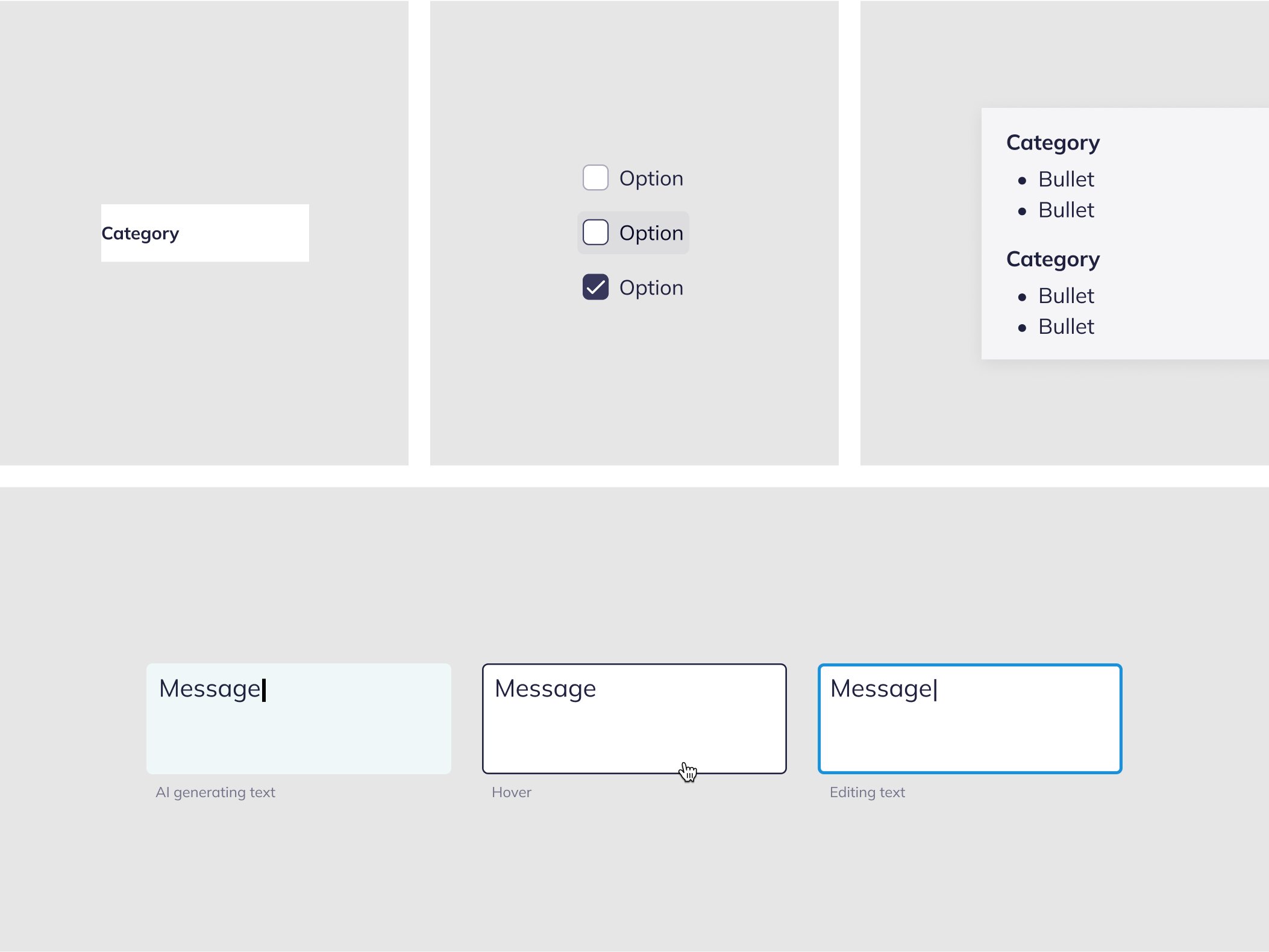

Outcomes
The AI-powered triage solution is anticipated to:
Speed up diagnosis and treatment
Reduce specialists’ workload
Improve diagnostic consistency
Streamline workflows and cut down on admin
Give patients faster, clearer, more personal care
The product is being prepared for clinical study and medical compliance before wider rollout.
Final reflection
One of the hardest parts was earning specialists’ trust. They needed a tool that supported their decisions without replacing their judgment. Designing something helpful, reliable, and usable meant letting go of assumptions and staying open to feedback—even when it challenged our ideas.
I learned how powerful it is to listen deeply, test often, and stay grounded in real-world needs. And that great ideas don’t happen in isolation.
The people
This was a real team effort. The PMs kept us focused and made sure we balanced ambition with regulation. The UX designer brought bold thinking. The Service Designer asked the hard questions that helped us stay grounded in actual workflows.
The specialists were amazing–honest, open, and deeply committed to making this work. And the developers? They’re the ones who made it real.
As the Product Designer, I helped bring it all together. From ideas and prototypes to working solutions that were clear, usable, and aligned with both user needs and business goals.
